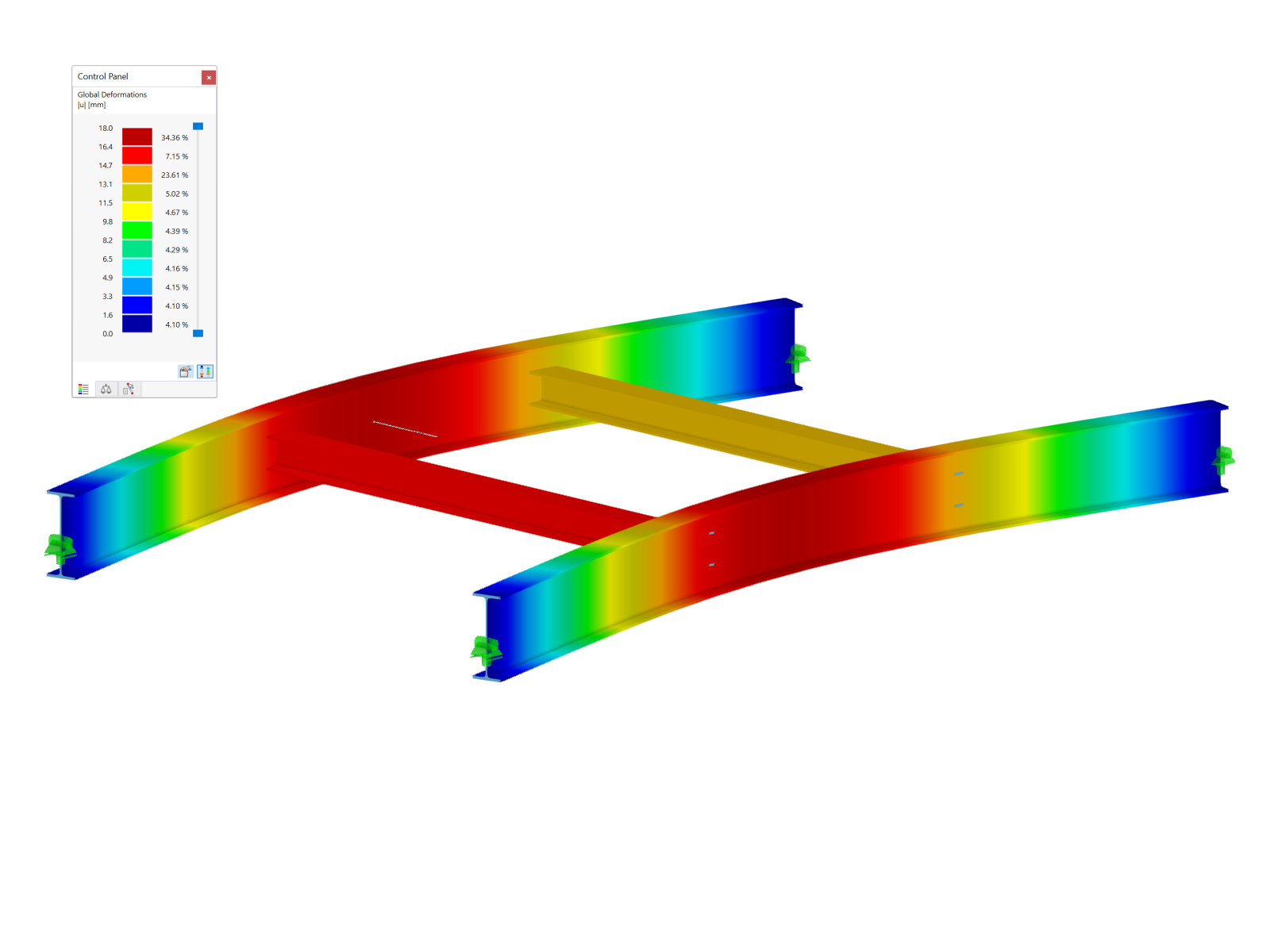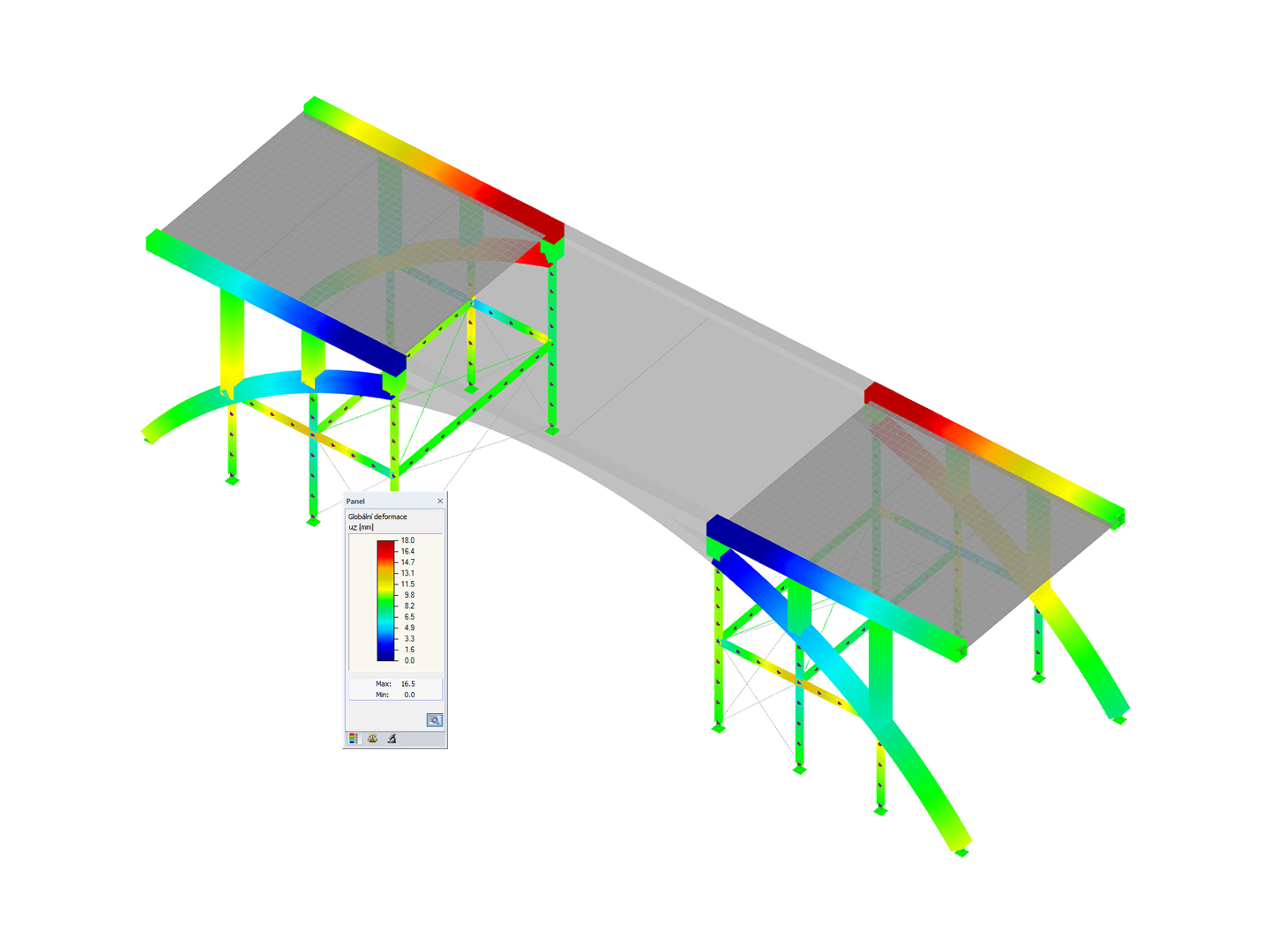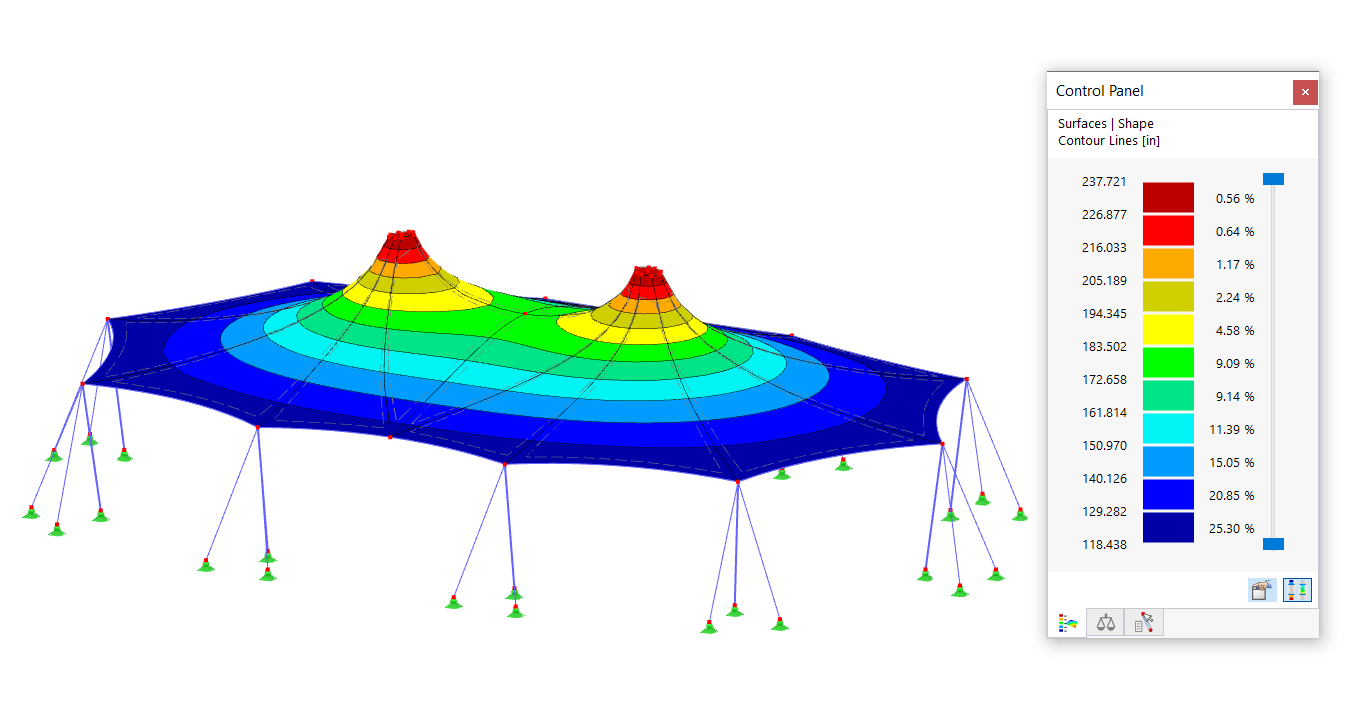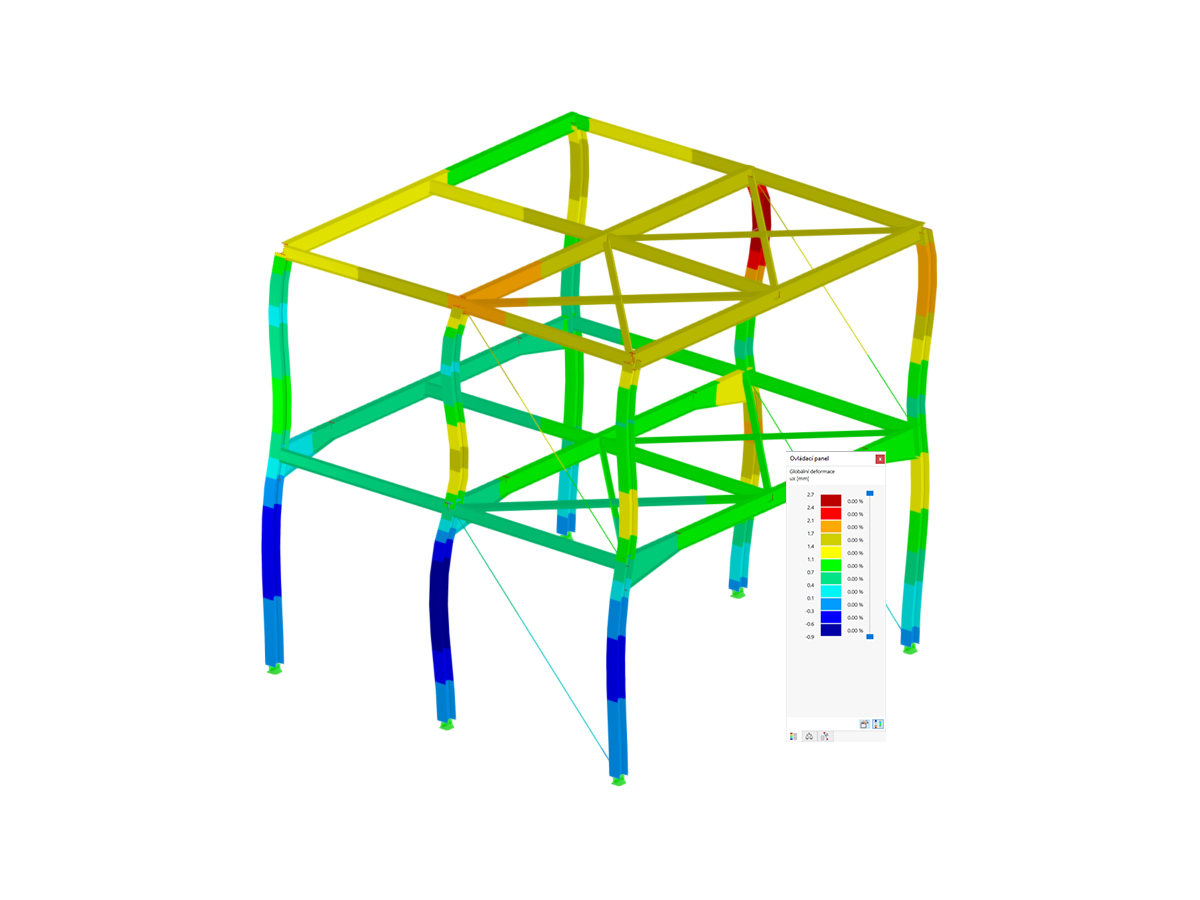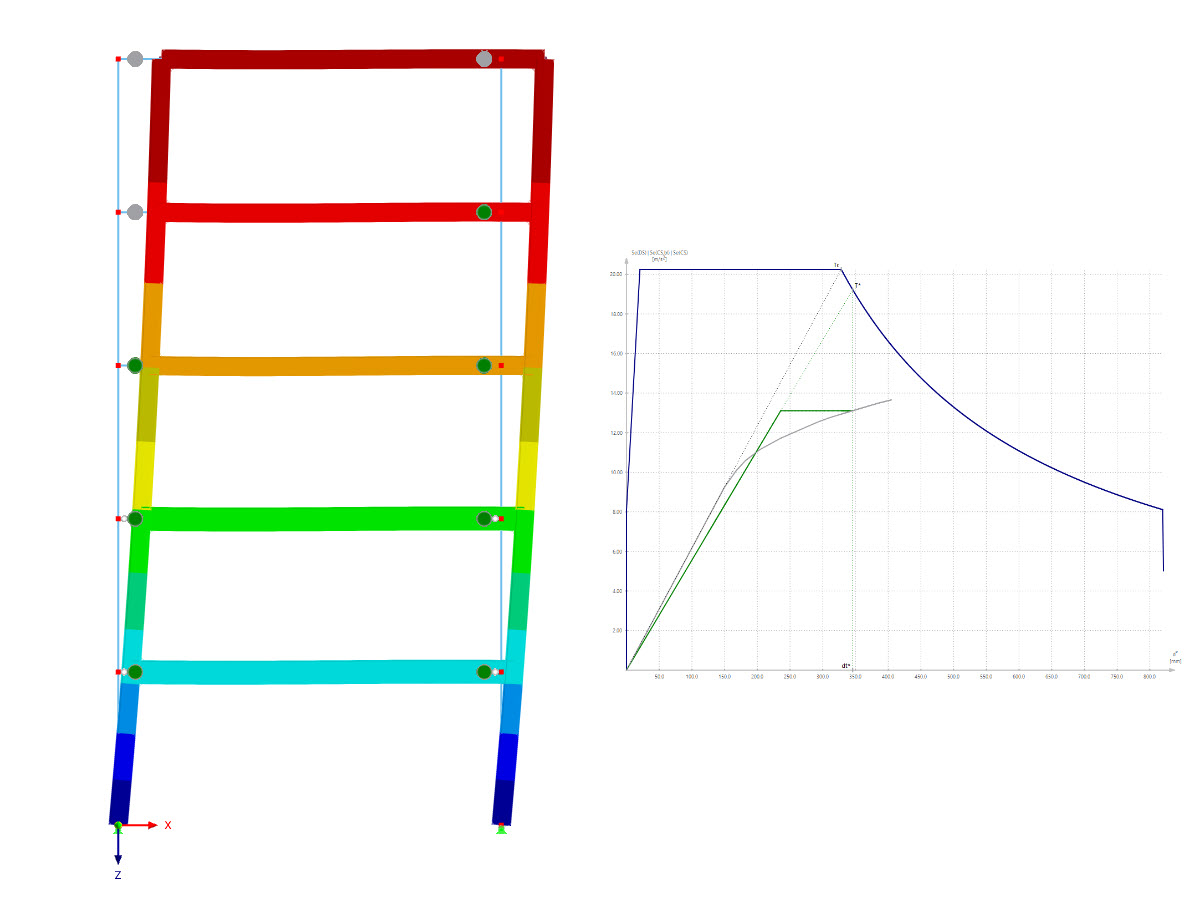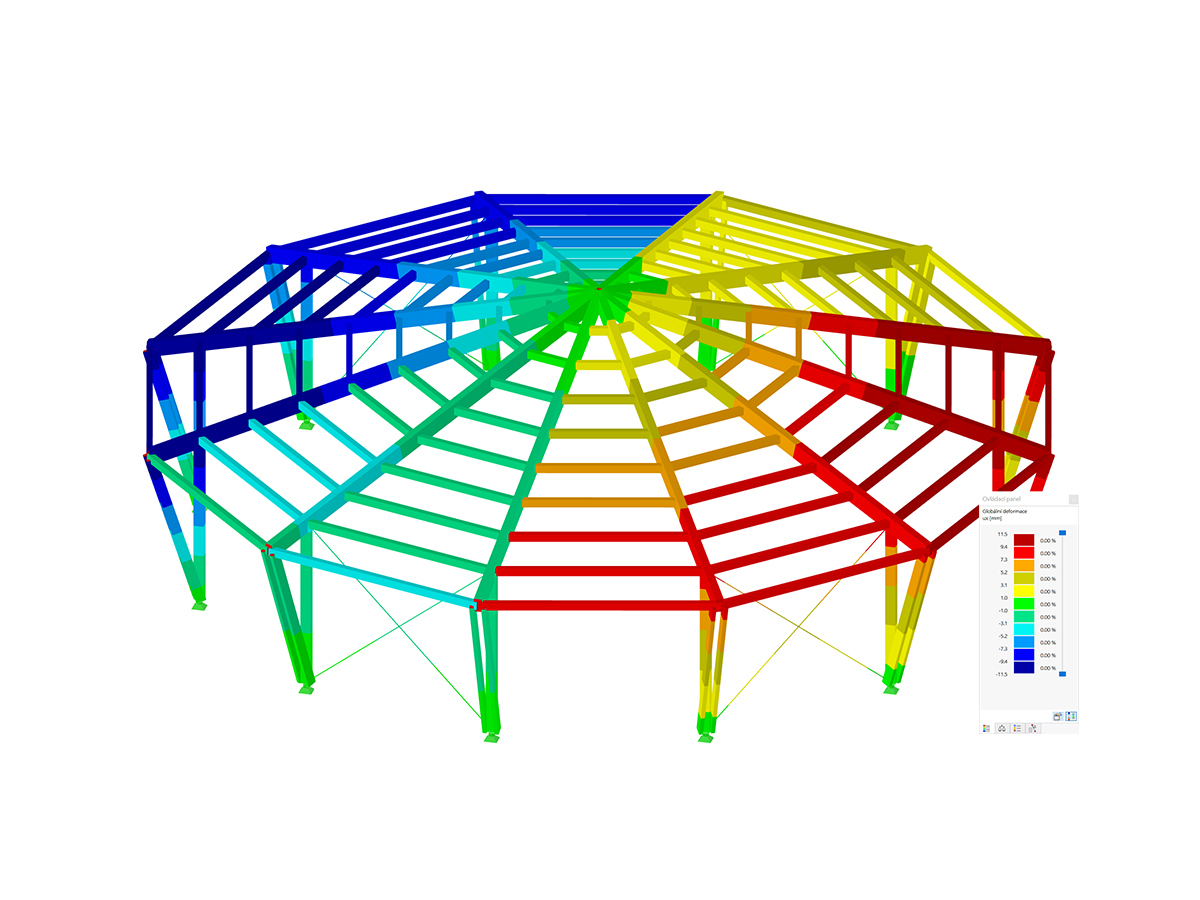The imperfection of a structural component consists of the following components:
- Geometric imperfections
- Material imperfections
- Eccentric Load Introduction
Since these imperfections are distributed along the length of the structural component, a function is first applied to them:
Furthermore, this design includes additional effects from the second-order analysis. However, they are strictly to be considered as additional and only virtually present in the derivation of the correct bending function from the imperfection. It is explicitly not possible to dispense with the calculation of internal forces according to the second-order analysis because of this individual design that is based on the effects of the second-order analysis. The additional effects of the second-order analysis included in this design concept are very small and should be applied to the already modified internal forces of the entire structure. As in the case of the determination of the ideal buckling load, the initial function is the equilibrium of the internal moments and the axial force with its eccentricity.
The following image shows how the Euler's buckling load is determined, and compares it using the Euler's formulas and the determination based on numerical methods. In this case, the deviation is only 0.47%. This illustrates how the basis of a modern stability analysis was laid several hundred years ago.
However, this eccentricity is now composed of a part that is purely the imperfection function, and a part of the second-order deformation analysis. This gives us the following formula:
Again, the constant α is introduced for substitution:
Inserting the constant and the imperfection function results in the following differential equation:
This corresponds to an inhomogeneous differential equation:
It represents the imperfection function, and thus cannot be 0.
First, the solution of the homogeneous equation is sought:
Then, it is necessary to solve the particular part of the equation:
If we substitute this particulate solution into the homogeneous equation, the result is:
It can be divided by sin(π·x/L), because the components and thus x have never a length of 0 m.
Thus, the total solution of the inhomogeneous differential equation results in:
|
wh |
homogene Lösung der DGL |
|
wp |
partikuläre Lösung der DGL |
Thus, the boundary conditions W(x=0) result in B and w(x=L) = 0. This results in B = 0 and the differential equation is reduced to:
Since the Euler's buckling load must result for A ≢ 0 and the imperfection must become infinitesimal again, it is necessary to consider Case A = 0!
Thus, the equation is:
Now, the equilibrium of the internal and external forces can be calculated:
When using the Euler's buckling load and calculating extreme values, you obtain the maximum bending moment.
The magnification factor (1-N/Ncr)-1 is called the Dischinger factor.
In order to ensure the most accurate results, a surface moment of inertia is applied that neglects the web. Furthermore, other imperfection factors, depending on the steel grade and ratios of the cross-section dimensions (buckling curves), are used to design the buckling failure on the basis of plasticizing flanges. Therefore, you can consider the selection of the buckling curve as a simplified type of cross-section classification, which reduces the application of plasticizing cross-sections in the case of buckling-prone sections. For simplification, a linear interaction is assumed.
The simplified radius of gyration is determined as follows:
In this case, only the Steiner components of the flanges about the major axis are considered.
Now, the equation for the maximum moment as a function of the ideal buckling load can be used in the equation of the linear interaction:
|
N |
maximale Normalkraft vor dem Knicken |
|
e0 |
gewählte Vorverformung |
|
Ncr |
kritische Knicklast |
|
Npl |
plastische Normalkrafttragfähigkeit |
|
h |
Profilhöhe |
Furthermore, the following constants are introduced:
|
e0 |
Vorverformung |
|
L |
Länge des Bauteils |
|
λ1 |
Grenzschlankheit |
|
α |
Imperfektionsbeiwert aus den verschiedenen Knicklinien |
|
λ |
Schlankheit |
|
λ ‾ |
bezogene Schlankheit |
|
m |
Divisor der Vorverformung wird auf Knicklinien angepasst |
In this case, a value determined from tests is applied for α:
When substituting the constants in the equation of the linear interaction, the following term results:
|
χ |
Abminderungsbeiwert aus dem Verhältnis der Normalkraft bei welcher die Stütze durch Biegeknicken ausfällt und der plastischen Tragfähigkeit |
|
α |
Imperfektionsbeiwert, welcher dem Verhältnis der Grenzschlankheit zur Imperfektionsamplitude entspringt. |
|
λ- |
Grenzschlankheit |









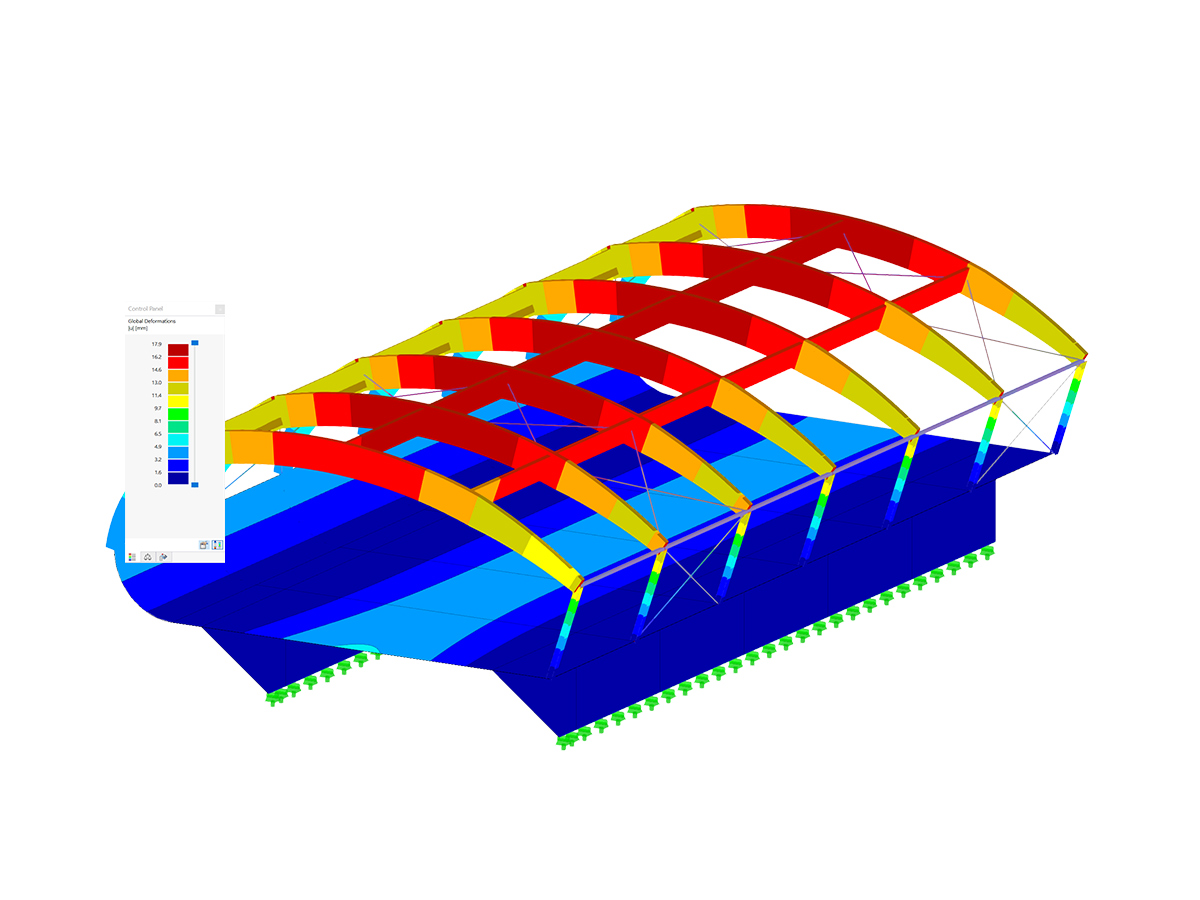

.png?mw=600&hash=49b6a289915d28aa461360f7308b092631b1446e)
